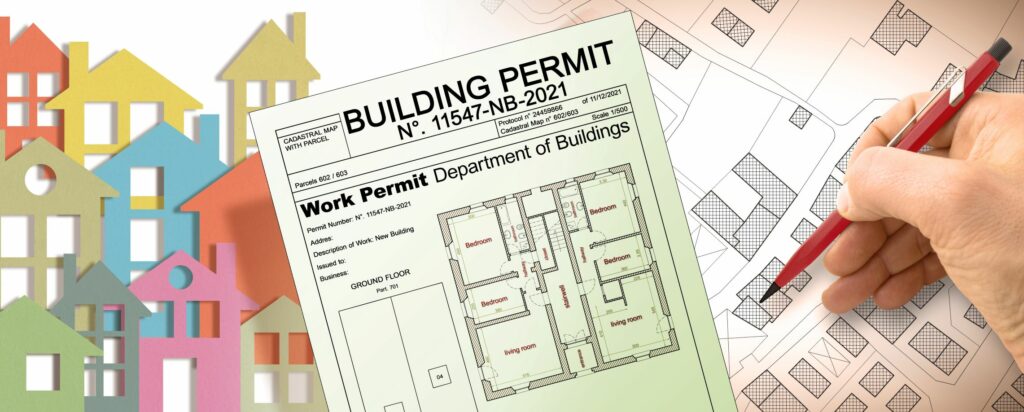
In the world of construction, data is more than just numbers—it’s insight, opportunity, and competitive advantage. One of the most valuable resources available to builders, remodelers, and contractors is building permit data. Whether you’re a seasoned professional looking for a refresher or someone just starting to explore how permit data can fuel business development, understanding the fundamentals is essential. This starter guide is designed to get back to the basics, serving as both an introduction and a lasting reference you can return to when needed.
What Is Building Permit Data?
At its core, building permit data is the information recorded when a property owner or contractor applies for a permit to begin construction, renovation, or repair work. Local municipalities issue permits to ensure that projects meet safety codes, zoning laws, and other regulations. Every time a permit is pulled, a public record is created, and that record often includes key details such as:
- Permit number and date issued
- Project type (new construction, remodeling, roofing, HVAC, electrical, plumbing, pool installation, etc.)
- Property location (address, jurisdiction, county, or region)
- Contractor information (builder, subcontractor, or applicant name)
- Estimated construction value
- Project scope (square footage, number of units, or type of work to be performed)
For construction professionals, information of this nature is invaluable. It not only shows where projects are happening, but also who is working on them and what type of demand exists in the market.
Types of Building Permits
Not all permits are created equal, and understanding the different types can help you make the most of the data. Some of the most common categories include:
- New Residential Construction Permits – This covers the building of new homes, subdivisions, or multi-family units.
- Remodeling and Renovation Permits – Issued for interior or exterior upgrades, additions, or home improvements.
- Commercial Construction Permits – For office buildings, retail spaces, industrial facilities, and other non-residential structures.
- Specialty Permits – Covering specific trades such as roofing, electrical, mechanical, and plumbing work.
- Swimming Pool Permits – Often tracked separately because of their significance in certain regions.
Each type of permit reveals different market signals. For example, an increase in new residential permits may suggest growing demand for subcontractors, while a surge in renovation permits may indicate an opportunity for remodelers and suppliers.
Building permit data is a forward-looking indicator of construction activity. Unlike completed project reports, permits are filed before the work even begins. This makes them a unique tool for predicting upcoming demand, identifying active contractors, and uncovering opportunities before the competition. Builders are able to spot where new subdivisions are breaking ground, remodelers can see which neighborhoods are investing in upgrades, and subcontractors can connect with general contractors before projects commence.
How to Use Building Permit Data
On the HBW blog, we have explored various ways that building permit data can be used to improve marketing, increase sales and development, and more. For many professionals, the challenge is in understanding how to apply the data strategically. Here are just a few practical ways it can be used:
- Market Research: Identify regions with strong growth trends by analyzing the volume and value of permits issued.
- Sales Prospecting: Use contractor and property owner information to build targeted prospect lists.
- Competitive Analysis: See which contractors are winning jobs and track shifts in market share.
- Business Planning: Align staffing, materials, and marketing investments with areas of high construction activity.
When used consistently, permit data provides a clear, real-time view of the construction landscape, helping businesses move from reactive to proactive decision-making.
While municipalities publish permits, the raw data can be difficult to interpret without the right tools; that’s where providers of permit data and construction reports play an important role. By compiling, cleaning, and analyzing permit records across regions, a data provider like HBW can deliver insights that are accurate, timely, and actionable. This allows builders, remodelers, and contractors to focus on what they do best—winning jobs and completing projects—without spending valuable time sorting through scattered public records.
Whether you are new to HBW or have been a subscriber for years, understanding the basics ensures that you are maximizing the value of your resources. By mastering the fundamentals, you position your business to identify trends more clearly, target prospects more effectively, and ultimately, create lasting opportunities.
For more information on construction business development and marketing tips, stay connected with the HBW Blog. To get ahead of construction activity and gain access to the latest permitting data in Florida, Texas, Georgia, Alabama and Oklahoma, contact HBW for more information on construction data reports and industry leads.
